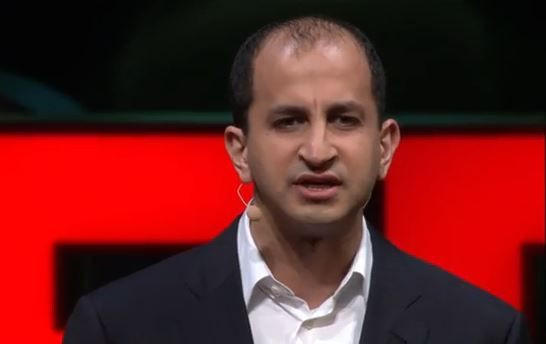Oxygen Injected Into The Blood Via Microparticles May Soon Rescue Patients From Hypoxemia

During October 2006, Dr. John Nagi Kheir was treating Jordan, a small child suffering from pneumonia, at Boston Children’s Hospital. Ten minutes after meeting her family and taking time to play with her, Jordan’s heart stopped beating “and her face was covered in blood" — a "rare and devastating” outcome of the disease. Although Kheir and the attending nurses performed every possible emergency measure, including surgery, the oxygen level in her blood dropped so low, a condition known as hypoxemia, that it caused irreversible brain injury, and Jordan died a few days later.
The night she passed away, Kheir, who is a professor in the department of cardiology at Harvard Medical School, lay awake unable to sleep while his mind whirled. As he explained in a TED Talk delivered years later, one question haunted him: “Why couldn’t we just put oxygen into her IV?” Obviously he understood that it couldn’t be inserted into an IV tube, but there must be some way oxygen could be delivered to the body as a medicine? “Wasn’t someone already working on this?” he asked himself.
Kheir soon discovered that since the 1980s, scientists had been working on gas-filled microparticles, yet no one had created what he thought was necessary, and so he began to experiment himself. After working in vitro on microparticles filled with oxygen, he eventually moved to animal models and found that his method could sustain normal oxygen levels up to 15 minutes even though their ability to breathe had been blocked.
So how does it work? “We have created a complex fluid that stores O2 gas within concentrated microparticles and can be used to administer oxygen intravenously to the bloodstream,” wrote Kheir and his colleagues in their research published in Science Translational Medicine. Essentially, the team of scientists first developed a semipermeable phospholipid shell — essentially a membrane — to contain oxygen (O2) gas. These lipidic oxygen-containing microparticles (LOMs) are able to bind to not-yet-oxygenated hemoglobin, a protein contained in the blood. Once they find together, the gas leaves the LOM and transfers to the hemoglobin and so becomes oxygenated. “LOMs are a one-way oxygen carrier designed to rescue patients who experience life-threatening hypoxemia, as caused by airway obstruction or severe lung injury,” the authors note in subsequent research. “When mixed with blood in vitro, LOMs fully oxygenate blood within 3.95 seconds of contact, and do not cause hemolysis or complement activation.”
In a second research paper, Kheir and his colleagues further explore the idea of microparticles and describe methods by which microparticles might be manufactured in bulk through a process of high shear homogenization. Although such technology has not yet been perfected, it appears to be moving in the direction of ultimate development. Years after witnessing Jordan’s untimely death, Kheir described the effect his tiny patient had on him and hopes his story might, in turn, inspire others to fulfill their own innovative potential. Watch below, courtesy of YouTube:



























